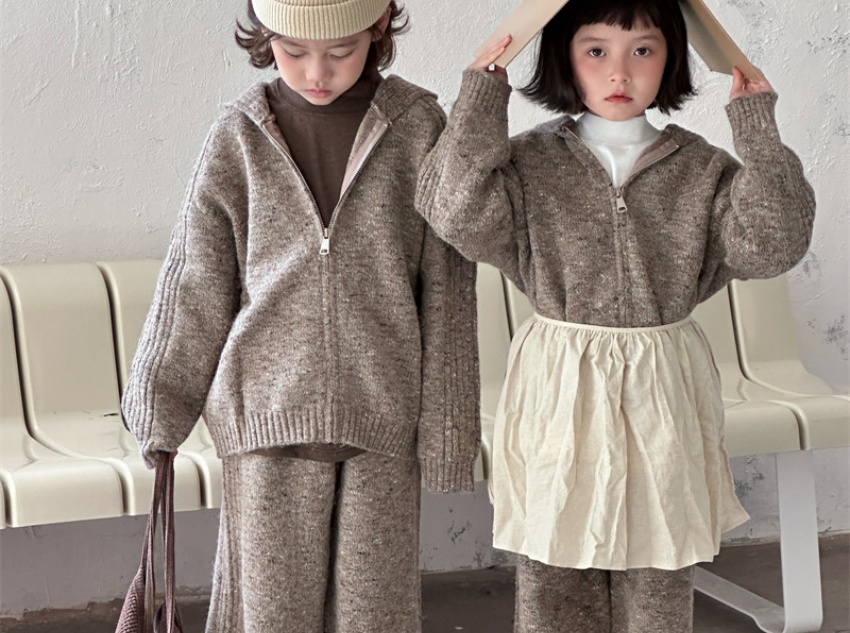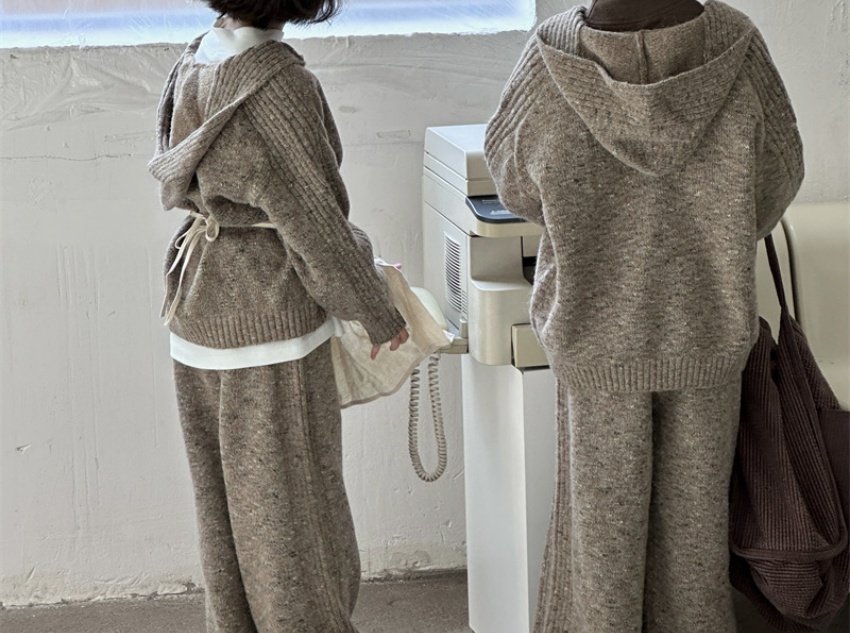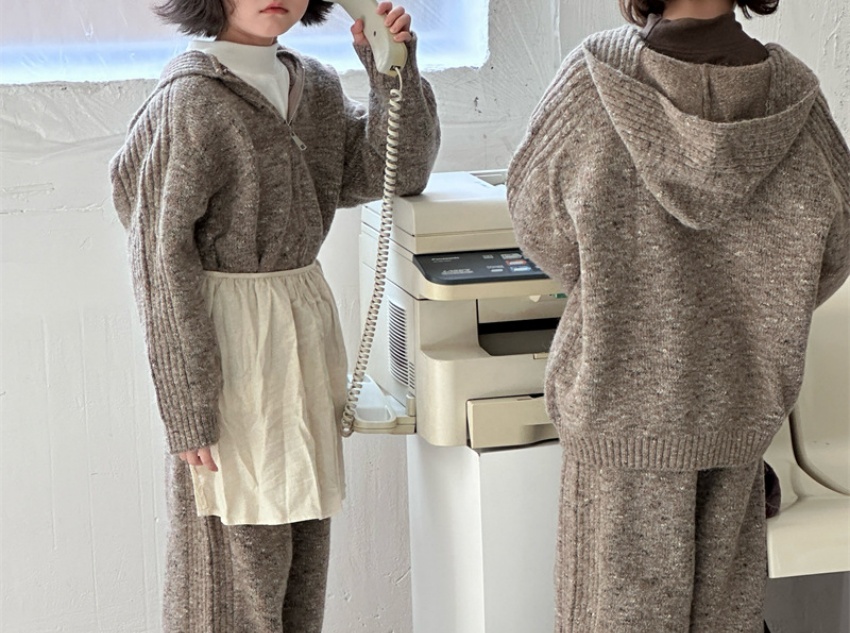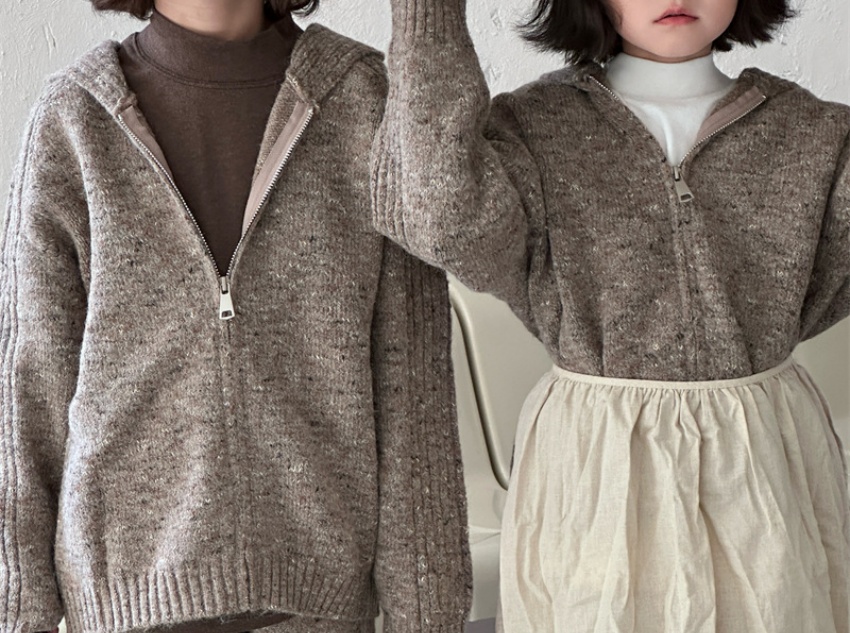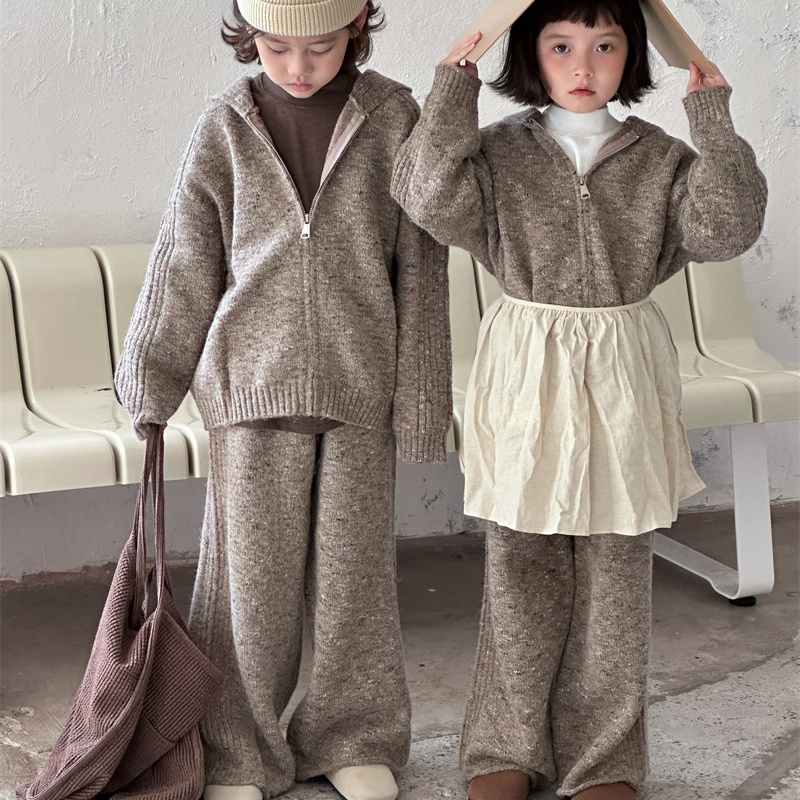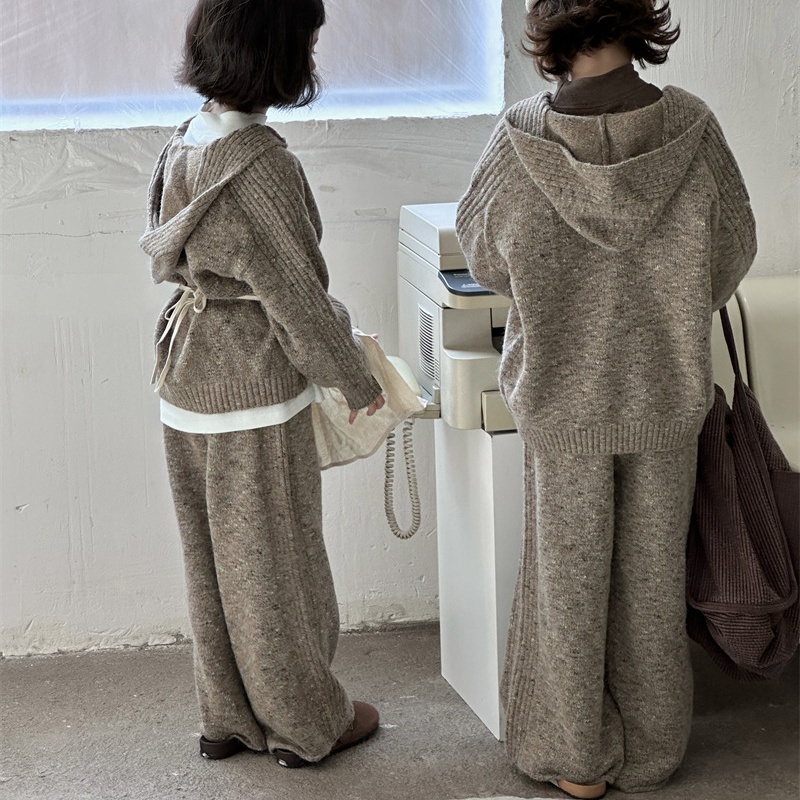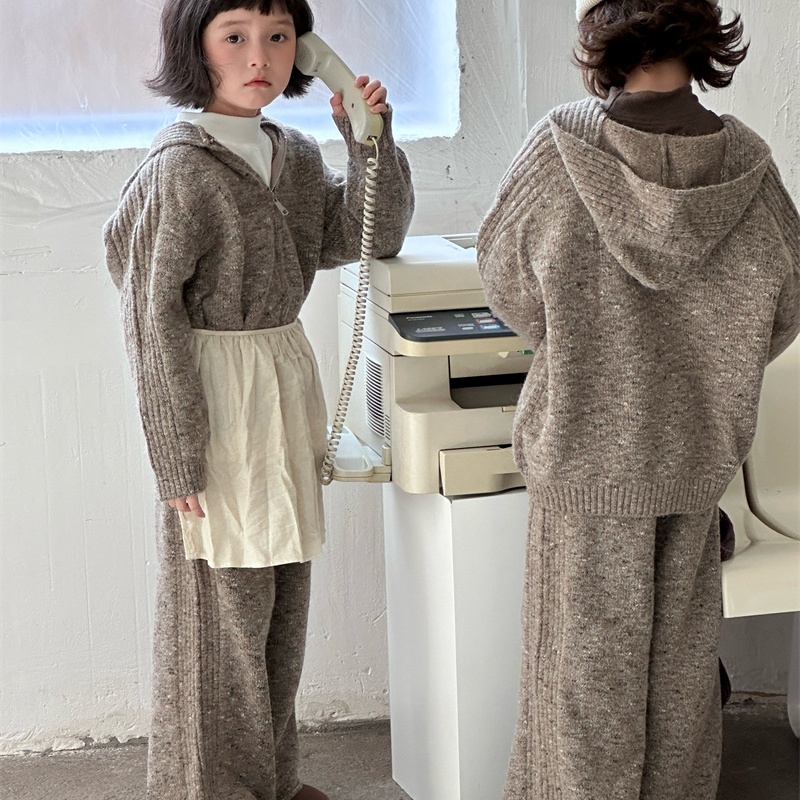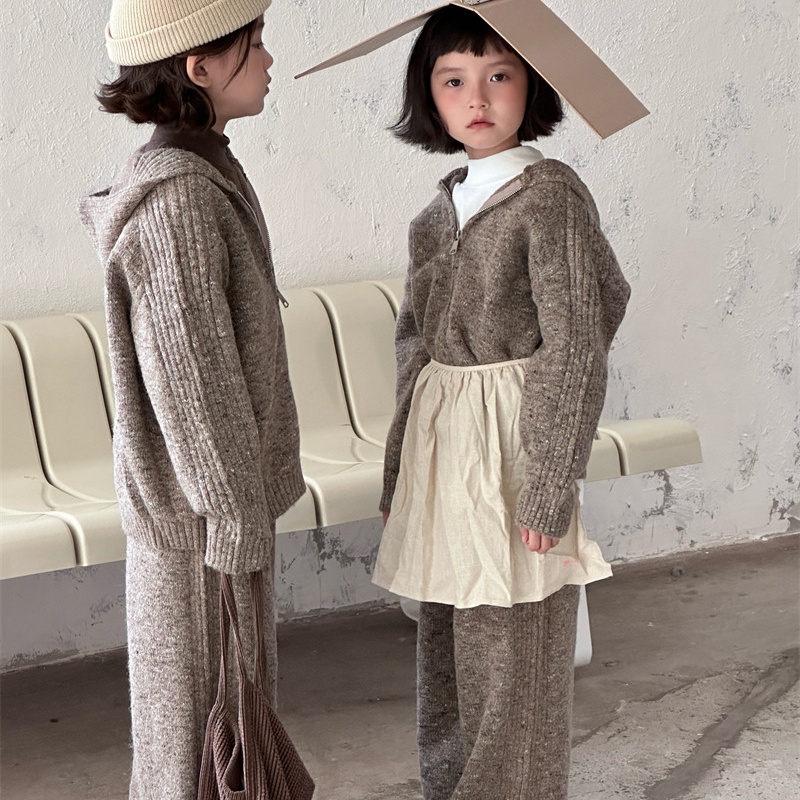The picture shows a zippered hooded children’s sweater set.
The jacket adopts a hooded zipper design. The edge of the collar may have undergone edging treatment to prevent the knitted fabric from coming apart, while also enhancing the comfort of wearing and avoiding friction on the child’s neck skin. The zipper is installed precisely. The stitching between the zipper teeth and the garment body is smooth, and the stitches are fine and even, ensuring that the zipper closes smoothly without any jamming or thread detachment. The top and bottom of the zipper may have also been reinforced to enhance durability.
The sweater is knitted as a whole. The fabric texture is clear and uniform, indicating that the yarn tension is well controlled during the knitting process. The body of the garment is woven with flat needles, and the stitches are regular, making the surface of the garment smooth. The sleeve section adopts a slightly different weaving technique from the garment body, such as a combination of rib weaving and plain knitting. At the junction of the shoulder and the garment body, the number of stitches is increased or decreased to make the shoulder line natural and smooth, making it more comfortable to wear.
The connection between the hat and the garment body is finely processed, using seamless splicing or tight sewing methods to ensure a firm connection and a smooth appearance. The edges of the hat may also have been ribbed to increase elasticity, fit the child’s head, and provide better warmth retention.
The waist of the trousers adopts an elastic band design. The installation process of the elastic band is meticulous. Usually, the elastic band is first fixed inside the waistband of the trousers, and then sewn to ensure that the elastic band is evenly distributed and will not twist or shift. During the sewing process, the stitches should be fine to prevent the elastic band from being exposed or coming loose, ensuring that the child’s waist is comfortable and fits well when wearing it.
The body of the trousers is also knitted, echoing the woven texture of the top, and has a strong sense of unity. The leg part of the trousers may have adopted a straight or wide leg style, and the style was shaped by adjusting the number of stitches during weaving. The edges of the trouser legs may have adopted a ribbed finishing process, which has a certain degree of elasticity. It can not only prevent cold wind from entering but also facilitate children’s movement, and at the same time enhance the aesthetic appeal of the clothing.
This children’s sweater set was meticulously crafted during the production process, with no obvious loose threads, demonstrating a high level of craftsmanship. While ensuring aesthetic appeal, it also pays attention to the comfort and safety of children wearing it.
